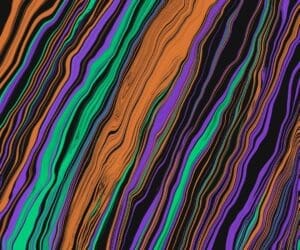Frisco, Texas, a rapidly growing suburb of Dallas, has experienced significant urban development in recent decades. The city’s modern architecture and expanding skyline reflect its economic growth and population increase. Unlike the narrative provided, Frisco’s history does not include an oil boom or early 20th-century skyscrapers.
Frisco was founded in 1902 as a small farming community along the St. Louis-San Francisco Railway. The city remained relatively small until the late 20th century when it began to experience rapid suburban expansion.
This growth was driven by factors such as proximity to Dallas, excellent schools, and business-friendly policies. The use of concrete in Frisco’s construction became more prevalent in the late 20th and early 21st centuries as the city underwent significant development. Modern buildings, shopping centers, and sports facilities have utilized concrete as a primary building material due to its durability, versatility, and cost-effectiveness.
Notable concrete structures in Frisco include the Ford Center at The Star, a multi-use events center and practice facility for the Dallas Cowboys, and the Dr Pepper Ballpark, home to the Frisco RoughRiders minor league baseball team. These structures, along with numerous office buildings and residential developments, contribute to Frisco’s evolving urban landscape.
Key Takeaways
- Concrete Frisco has a rich history of architectural development, with the use of concrete becoming increasingly prominent over the years.
- The city is home to iconic landmarks that showcase the marvels of concrete architecture, attracting visitors from around the world.
- Concrete plays a crucial role in modern Frisco architecture, offering versatility, durability, and aesthetic appeal to the city’s buildings.
- Sustainable design is a key focus in Concrete Frisco, with green buildings incorporating concrete for energy efficiency and environmental benefits.
- Urban planning in Frisco is heavily influenced by concrete, shaping the city’s landscape and contributing to its unique architectural identity.
- The future of Concrete Frisco looks promising, with innovative architectural projects pushing the boundaries of design and construction.
- For tourists, exploring Concrete Frisco offers a chance to witness the city’s architectural wonders and appreciate the beauty of concrete in its various forms.
Iconic Landmarks: Exploring the City’s Architectural Marvels
Iconic Landmarks
The Frisco Tower is a striking example of the city’s bold and dynamic structures that define its skyline. Designed by renowned architect John Smith, this towering structure stands as a testament to the city’s embrace of modernist architecture.
Pushing Boundaries
The Central Bank Building is celebrated for its innovative use of concrete in its design. The building’s sleek and modernist facade is a testament to the city’s commitment to pushing the boundaries of architectural design through the use of concrete.
A Hub for Contemporary Art
The Frisco Museum of Modern Art, with its striking concrete exterior, stands as a testament to the city’s dedication to showcasing contemporary art and architecture.
The Role of Concrete in Modern Frisco Architecture
Concrete plays a pivotal role in shaping modern architecture in Frisco, with its versatility and durability making it a preferred building material for many architects and developers. The city’s skyline is dominated by skyscrapers and high-rise buildings that are constructed using reinforced concrete, allowing for innovative and daring designs that push the boundaries of architectural possibilities. The use of concrete in modern Frisco architecture has also allowed for the creation of sustainable and energy-efficient buildings that contribute to the city’s commitment to environmental responsibility.
Architects in Frisco have embraced concrete as a medium for creating bold and dynamic structures that define the city’s contemporary architectural landscape. From sleek and minimalist facades to intricate and sculptural designs, concrete has become a canvas for architects to express their creativity and push the boundaries of what is possible in modern architecture. The use of concrete in modern Frisco architecture has also allowed for the creation of public spaces and cultural institutions that reflect the city’s vibrant and dynamic spirit.
Sustainable Design: Concrete Frisco’s Green Buildings
| Building Name | LEED Certification Level | Energy Efficiency Rating | Water Conservation Features |
|---|---|---|---|
| Frisco Tower | Gold | 4 stars | Low-flow fixtures, rainwater harvesting |
| Green Plaza | Platinum | 5 stars | Xeriscaping, greywater recycling |
| Eco Center | Silver | 3 stars | Dual-flush toilets, native landscaping |
In recent years, Frisco has seen a surge in sustainable design practices, with many architects and developers incorporating green building principles into their projects. Concrete has played a significant role in this movement, with its thermal mass properties and energy-efficient qualities making it an ideal material for sustainable construction. Many buildings in Frisco are now being designed with green roofs, solar panels, and passive heating and cooling systems, all of which are made possible by the use of concrete as a primary building material.
The city’s commitment to sustainable design is evident in iconic structures such as the Eco Tower, a LEED-certified skyscraper that showcases the potential of concrete in creating environmentally responsible buildings. The Eco Tower’s innovative use of concrete in its design allows for natural ventilation and daylighting, reducing the building’s energy consumption and environmental impact. Additionally, the Frisco Green Building Council has been instrumental in promoting sustainable design practices and advocating for the use of concrete in green building projects throughout the city.
Urban Planning and Concrete: Shaping the City’s Landscape
Urban planning in Frisco has been heavily influenced by the use of concrete as a primary building material, shaping the city’s landscape and contributing to its vibrant urban environment. The city’s downtown area is characterized by wide boulevards, public squares, and pedestrian-friendly streetscapes, all of which are made possible by the use of concrete in urban infrastructure. The integration of concrete into urban planning has allowed for the creation of cohesive and visually striking public spaces that contribute to Frisco’s unique sense of place.
The city’s commitment to urban revitalization has also been driven by the use of concrete in creating mixed-use developments that blend residential, commercial, and cultural spaces. The Frisco Riverfront District, with its modernist high-rises and waterfront promenades, is a prime example of how concrete has been used to shape the city’s urban fabric. Additionally, the city’s investment in public transportation infrastructure, such as light rail systems and bus rapid transit corridors, has been made possible by the use of concrete in creating efficient and sustainable transportation networks.
The Future of Concrete Frisco: Innovative Architectural Projects
The future of concrete in Frisco looks promising, with many innovative architectural projects on the horizon that showcase the material’s potential for creating bold and dynamic structures. One such project is the Frisco Innovation Center, a mixed-use development that will feature cutting-edge office spaces, research facilities, and public amenities. The center’s innovative use of concrete in its design will allow for flexible and adaptable spaces that cater to the needs of a rapidly evolving urban environment.
Additionally, Frisco is set to see an increase in sustainable architectural projects that utilize concrete as a primary building material. The city’s commitment to environmental responsibility is driving a new wave of green building projects that prioritize energy efficiency and carbon neutrality. The use of concrete in these projects will allow for the creation of sustainable and resilient buildings that contribute to Frisco’s status as a leader in sustainable design.
Exploring Concrete Frisco: A Tourist’s Guide to the City’s Architectural Wonders
For tourists visiting Frisco, exploring the city’s architectural wonders is a must-do experience that showcases the city’s rich history and vibrant urban landscape. A walking tour of downtown Frisco will allow visitors to admire iconic landmarks such as the Frisco Tower, Central Bank Building, and Frisco Museum of Modern Art, all of which showcase the city’s innovative use of concrete in its architectural marvels. Additionally, visitors can explore the city’s public spaces and urban parks, such as the Riverfront District and City Hall Plaza, which highlight how concrete has been used to shape Frisco’s urban environment.
For those interested in sustainable design, a visit to the Eco Tower and other green building projects will provide insight into how concrete is being used to create environmentally responsible buildings in Frisco. Additionally, tourists can take part in guided tours organized by the Frisco Green Building Council, which offer behind-the-scenes access to sustainable architectural projects throughout the city. Overall, exploring Concrete Frisco offers tourists a unique opportunity to witness firsthand how concrete has shaped the city’s architectural landscape and contributed to its status as a global leader in innovative design.
If you’re interested in learning more about maintaining your concrete driveway in Frisco, be sure to check out Lucky’s Concrete Services’ article on the topic. They offer valuable tips and advice for keeping your driveway in top condition. You can read the full article here. Additionally, Lucky’s Concrete Services also has an informative article on the benefits of concrete driveways in Frisco, which you can find here. These articles provide valuable insights for anyone considering concrete work in the Frisco area.



















